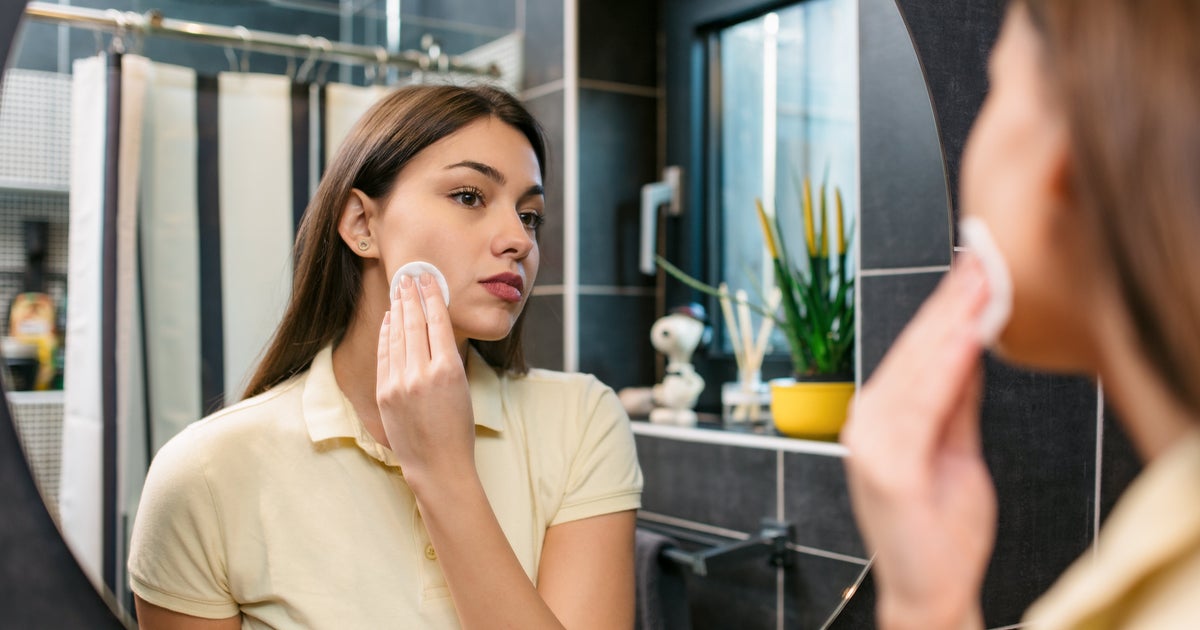We’ve all been there: the irresistible urge to pop a pimple, whitehead, or blackhead. But dermatologists strongly advise against it. “Popping is detrimental because it increases redness and inflammation, leading to longer healing times,” explained Dr. Jason Chouake of the American Academy of Dermatology. “It also raises the risk of infection and permanent scarring.”
Nicole Olsen learned this lesson the hard way when she developed an infection after squeezing a pimple on her face. As a medical professional, she turned to povidone-iodine, a common antiseptic used before and after surgeries. Olsen documented her experience in a TikTok video, showing how she applied the orange-brown solution with a cotton swab to treat her acne and scarring. “Within hours, I noticed a reduction in inflammation and pressure,” Olsen shared. “The next day, the scab began to come off, and there wasn’t even a mark left, unlike my usual scars from popping pimples.”
Olsen’s TikTok video sparked a trend of using povidone-iodine for acne treatment. Users from different countries and cultures chimed in, sharing how iodine is commonly used in Armenian households and other places. Dermatologists understand why povidone-iodine can lead to clearer skin. However, they caution about potential risks before incorporating it into your skincare routine. Here’s what the experts suggest you should know.
Povidone-iodine has bacteria-fighting properties, making it effective against acne. Iodine has been used for over 150 years to prevent infections. You may have seen iodine solutions on hospital shows, as doctors often use them during surgery or while scrubbing. This disinfectant is also suitable for skin preparation for nonsurgical procedures. Povidone-iodine is available over the counter in various forms, including liquid, dry powder spray, and ointment. These solutions are primarily intended for treating small cuts, burns, and scrapes.
“When povidone-iodine dries on the skin, it acts as a disinfectant by penetrating rapidly into bacteria and other microorganisms, oxidizing key proteins and fatty acids, which leads to their death,” explained Chouake. “Its quick action against microbes makes it a valuable tool for cleaning the skin before surgeries to prevent infection.” Antiseptics generally contain biocides that kill and control the growth of certain organisms. Povidone-iodine can eliminate bacteria in minutes or even seconds. “By reducing bacteria on the skin, it can improve acne,” added Chouake. “Topical antibiotics and washes with ingredients like benzoyl peroxide, clindamycin, and sulfur are commonly used for treating acne.”
While povidone-iodine is generally safe to use, cosmetic dermatologist Dr. Jaishree Sharad advises against regular application. “Povidone-iodine can cause irritation, so it should only be used as an ‘SOS treatment’ for a day or two if no other options are available,” she warned. Another potential side effect is hyperpigmentation, which results in darker patches of skin. This can manifest as freckles or age spots. “Popping pimples can cause skin damage and post-inflammatory hyperpigmentation, especially in people of color,” Sharad cautioned. “It can also lead to secondary bacterial infections.”
It’s crucial to test any product before incorporating it into your skincare routine. “There’s a good reason why we don’t recommend iodine,” said Chouake. “Povidone-iodine should not be left on the skin for extended periods as it can cause severe contact dermatitis.” Contact dermatitis is an allergic reaction that occurs when the immune system responds to certain substances, even in small amounts. It can result in a red rash, swelling, itching, or dryness. Therefore, caution is advised before applying povidone-iodine all over your face.
Instead of using iodine, Chouake recommends topical medications and antimicrobials that keep pores clear. “I highly recommend gentle benzoyl peroxide washes or hypochlorous acid washes or sprays,” he suggested.
If you’re searching for effective acne spot treatments, here are some recommendations:
1. La Roche-Posay Effaclar Duo Treatment: This benzoyl peroxide cream is suitable for dry and sensitive skin.
2. ZitSticka Killa Kit: These self-dissolving pimple patches contain salicylic acid and niacinamide to address both existing and emerging zits.
3. Mario Badescu Drying Lotion: This cult-favorite treatment contains sulfur and salicylic acid to draw out impurities and reduce redness.
4. Differin (Adapalene) Gel: This topical retinoid gel helps control acne formation and can be used as a spot treatment or for full-face application.
5. Hydrocolloid Acne Patches: These translucent patches absorb moisture and oil from superficial acne bumps, making them less visible and aiding in healing.
6. LED Light Therapy Device: Blue and red LED lights can be used to treat acne by killing bacteria and reducing inflammation.
While these products can be effective, it’s essential to remember that skincare routines vary from person to person. What works for one individual may not work for another. It’s always a good idea to consult with a dermatologist to determine the best course of action for your specific needs.
Denial of responsibility! VigourTimes is an automatic aggregator of Global media. In each content, the hyperlink to the primary source is specified. All trademarks belong to their rightful owners, and all materials to their authors. For any complaint, please reach us at – [email protected]. We will take necessary action within 24 hours.


